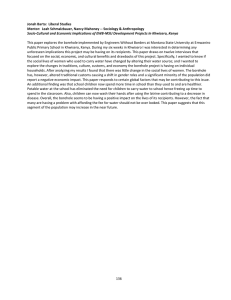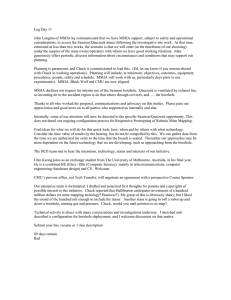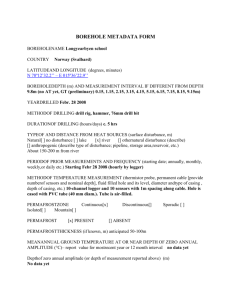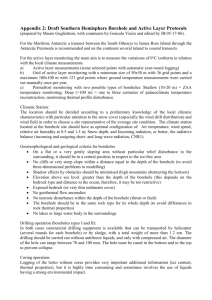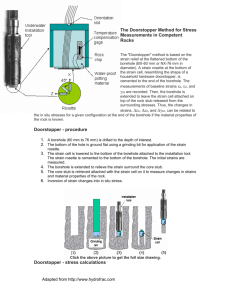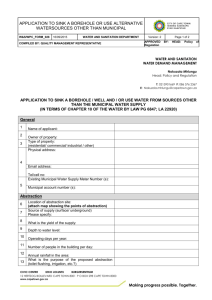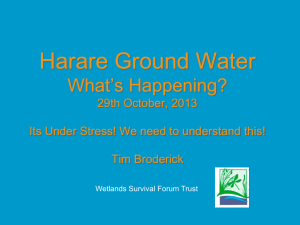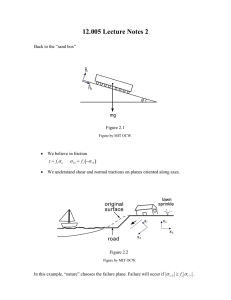Problem Set #1
advertisement
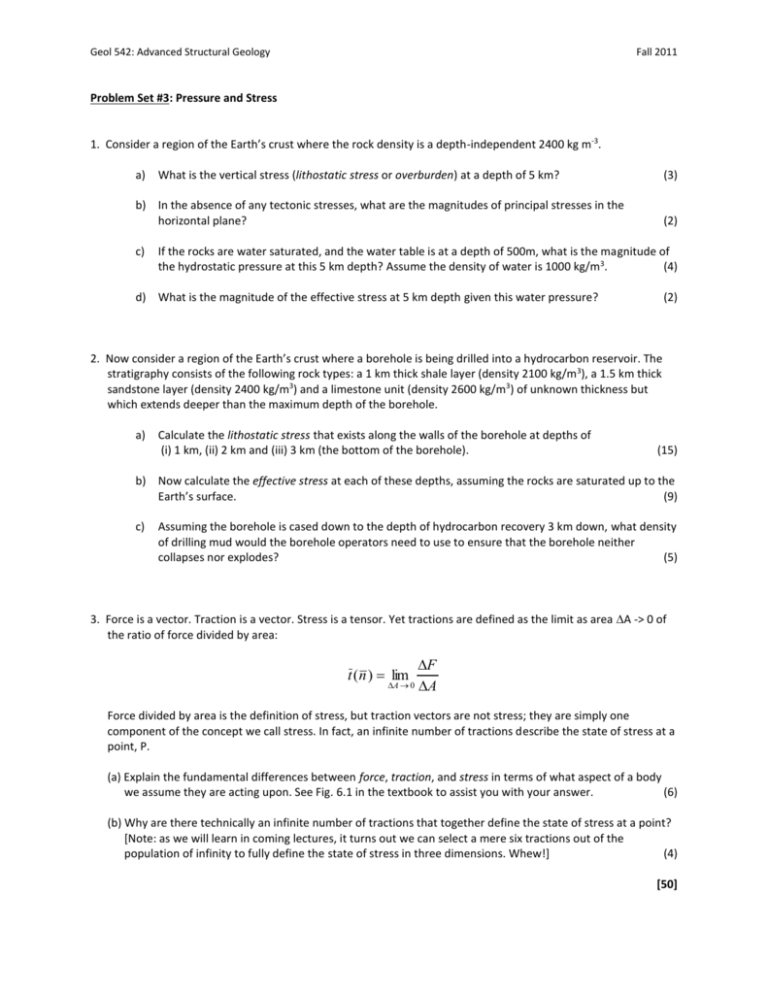
Geol 542: Advanced Structural Geology Fall 2011 Problem Set #3: Pressure and Stress 1. Consider a region of the Earth’s crust where the rock density is a depth-independent 2400 kg m-3. a) What is the vertical stress (lithostatic stress or overburden) at a depth of 5 km? (3) b) In the absence of any tectonic stresses, what are the magnitudes of principal stresses in the horizontal plane? c) (2) If the rocks are water saturated, and the water table is at a depth of 500m, what is the magnitude of the hydrostatic pressure at this 5 km depth? Assume the density of water is 1000 kg/m3. (4) d) What is the magnitude of the effective stress at 5 km depth given this water pressure? (2) 2. Now consider a region of the Earth’s crust where a borehole is being drilled into a hydrocarbon reservoir. The stratigraphy consists of the following rock types: a 1 km thick shale layer (density 2100 kg/m 3), a 1.5 km thick sandstone layer (density 2400 kg/m3) and a limestone unit (density 2600 kg/m3) of unknown thickness but which extends deeper than the maximum depth of the borehole. a) Calculate the lithostatic stress that exists along the walls of the borehole at depths of (i) 1 km, (ii) 2 km and (iii) 3 km (the bottom of the borehole). (15) b) Now calculate the effective stress at each of these depths, assuming the rocks are saturated up to the Earth’s surface. (9) c) Assuming the borehole is cased down to the depth of hydrocarbon recovery 3 km down, what density of drilling mud would the borehole operators need to use to ensure that the borehole neither collapses nor explodes? (5) 3. Force is a vector. Traction is a vector. Stress is a tensor. Yet tractions are defined as the limit as area A -> 0 of the ratio of force divided by area: F A 0 A t (n ) lim Force divided by area is the definition of stress, but traction vectors are not stress; they are simply one component of the concept we call stress. In fact, an infinite number of tractions describe the state of stress at a point, P. (a) Explain the fundamental differences between force, traction, and stress in terms of what aspect of a body we assume they are acting upon. See Fig. 6.1 in the textbook to assist you with your answer. (6) (b) Why are there technically an infinite number of tractions that together define the state of stress at a point? [Note: as we will learn in coming lectures, it turns out we can select a mere six tractions out of the population of infinity to fully define the state of stress in three dimensions. Whew!] (4) [50]
